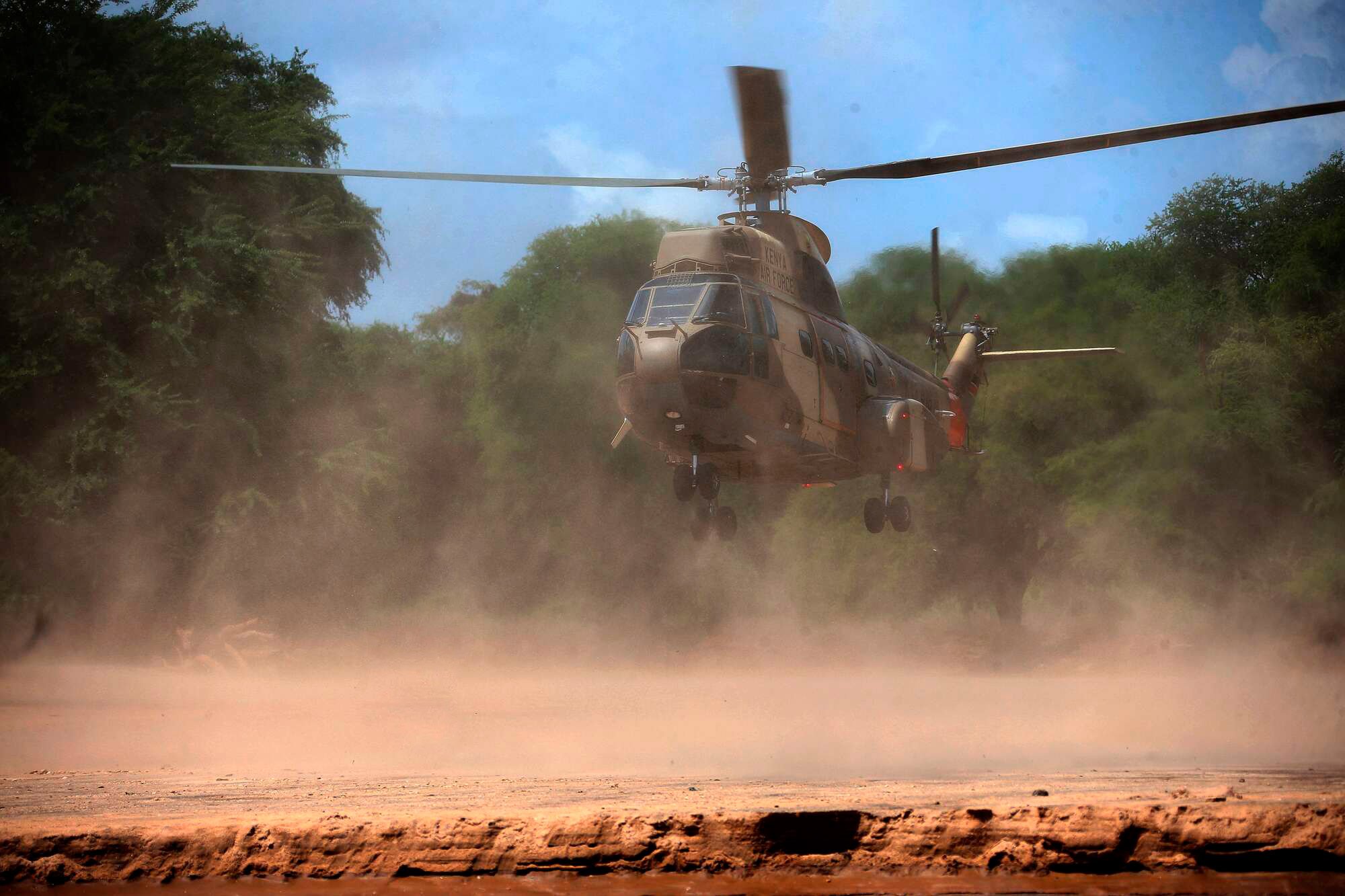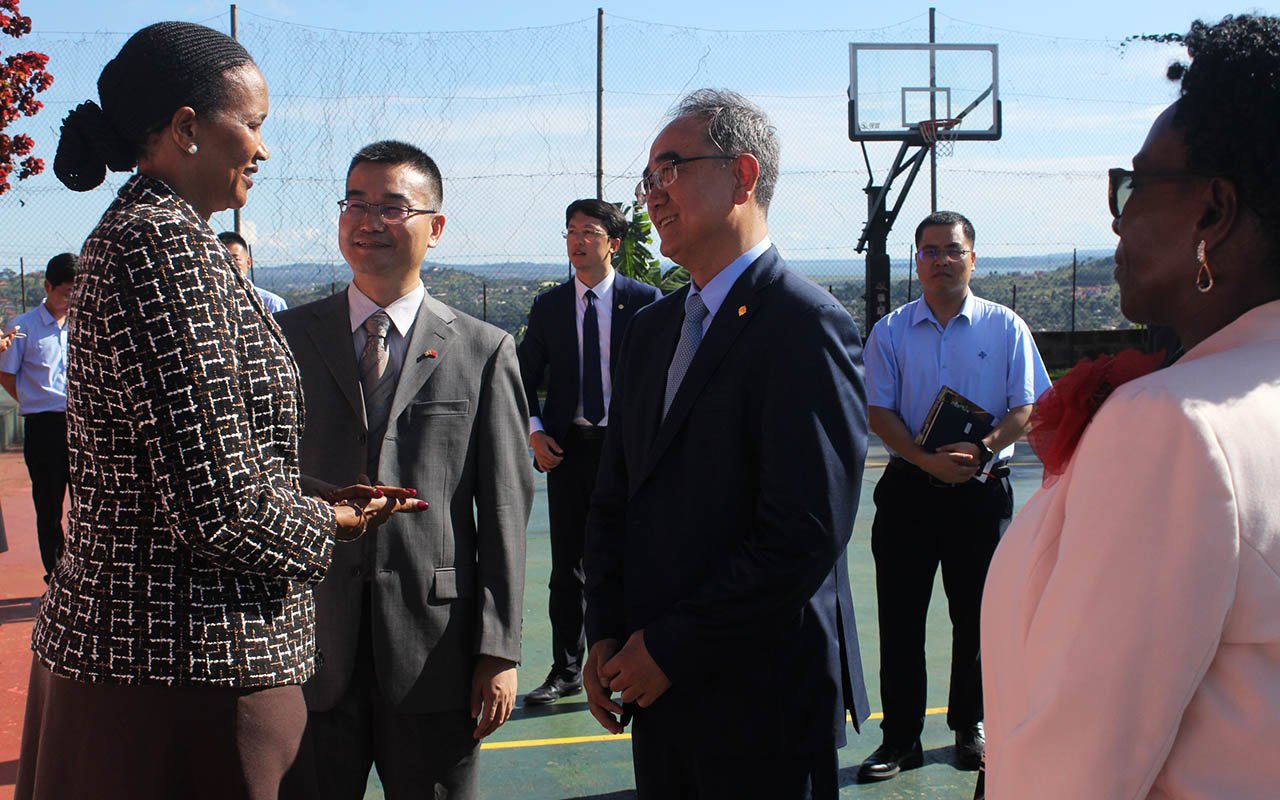End of Mandela’s long walk

The hearse carrying the casket of Mandela drives to the Waterkloof Air Force Base in Pretoria for a farewell service and departure to Qunu where he will be buried. AFP photo
What you need to know:
The funeral at Mandela’s childhood home will be held according to traditional Xhosa rites overseen by male members of Mandela’s clan. His burial, will, however, be a private matter.
Johannesburg- Nelson Mandela embarked on the final Nelson Mandela embarked on the final leg of his exceptional 95-year journey on Saturday, with his remains returned to his rural childhood home for traditional burial today.
The flag-draped coffin with the body of South Africa’s first black president and anti-apartheid hero was taken early in the morning to the Waterkloof air force base near Pretoria, where tens of thousands had seen him lie in state since Wednesday.
Mandela’s widow Graca Machel and his ex-wife Winnie Madikizela-Mandela were at the base with other family members, top government officials including President Jacob Zuma and invited foreign guests like US civil rights activist Jesse Jackson.
After the ceremony at the base organised by the ruling African National Congress (ANC), which Mandela once led, his body was flown to Qunu in Eastern Cape province.
Since his death at his Johannesburg home on December 5, South Africans have turned out in pouring rain and blistering sunshine to say goodbye to the anti-apartheid icon who transformed their country and inspired the world.
Tens of thousands packed a soaked stadium in Soweto for a memorial service Tuesday that attracted more than 100 world leaders. Up to 100,000 people filed past Mandela’s open-casket for the three days it was displayed at the Union Buildings in Pretoria, where he was inaugurated two decades earlier.
The huge numbers of people meant that many had to be turned away, leading to scuffles with police on Friday as frustrated mourners struggled for a final glimpse of the prisoner turned president who led them out of the apartheid era.
When his casket arrived at Waterkloof, the South African flag was replaced by the ANC colours for a religious-part political ceremony of songs and speeches by ANC leaders.
Mandela’s favourite poem “Invictus” was printed on the back of the programme and a verse was read out during the service.
Bright future
In a speech, Mandela’s grandson Mandla recalled how as a young child he would hear people in the then blacks-only township of Soweto shouting Amandla! (power) and “Viva Mandela”.
“I thought I must be a very popular kid,” Mandla joked.
South Africa has lost its talisman at a time when his “Rainbow Nation” struggles against glaring inequalities, but Mandla -- an ANC member of parliament -- said Mandela’s legacy was secure.
“I have witnessed ordinary South Africans who walked this long walk to freedom with him ... and the future of this country looks bright,” he said.
On arrival at the airport near Qunu, Mandela’s casket would be carried to his home village in a procession led by the armed forces, and would receive a 21-gun salute and a flyover by the South African Air Force.
Today’s [Sunday’s] funeral will begin at 8am (0600 GMT) with a two-hour ceremony in front of an estimated 50,000 audience.
But the burial itself will be a strictly private affair, barred to both the public and the media.
“The family has indicated they want to make the burial a family matter,” government spokeswoman Phumla Williams told the media.
“They don’t want it to be televised. They don’t want people to see when the body is taken down,” she added.
Traditional burial
Around 3,000 members of the media had already descended on Qunu where a special stage and marquee have been erected for the invited guests, who include Britain’s Prince Charles.
The funeral will be held according to traditional Xhosa rites overseen by male members of Mandela’s clan.
The slaughtering of an animal -- a ritual performed through various milestones of a person’s life -- will form a crucial part of the event.
“A funeral is an intricate ceremony that involves communicating with the ancestors and allowing the spirit of the departed person to rest,” said Chief Jonginyaniso Mtirara of the Thembu clan that Mandela hails from.
“The spilling of animal blood is a very important part of the burial process,” he said.
During the ceremony, South Africa’s first black president will be referred to as Dalibhunga -- the name given to him at the age of 16 after undergoing the initiation to adulthood.
Although Mandela never publicly declared his religious denomination, his family comes from a Methodist background.
Xhosa burial rituals
• Rituals are performed for the soul to be reunited with the mortal remains, and returned the ancestral home, for spiritual harmony to be attained
• A person is buried with their special belongings and the things they liked and used during their lifetime
• Rain leading up to or on the day of the funeral is interpreted as a good sign that the heavens and the spiritual world are welcoming the dead
• Around the time of the funeral, a sheep or goat is slaughtered, and herbs are used to cleanse the family of the departed person and call for their protection
• After the person has departed, family rituals and ceremonies will often involve invoking the dead person’s spirit as an ancestor to mediate between the living and the creator




